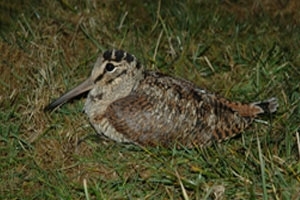 Earlier this week, Defra gave its response to a petition launched last year arguing that ‘only a proper ban’ will ensure the future of woodcock.
Earlier this week, Defra gave its response to a petition launched last year arguing that ‘only a proper ban’ will ensure the future of woodcock.
“Recent population trends for woodcock are likely to be influenced by the extent and quality of habitat rather than shooting. There are no plans for a ban,” states the government department in response to Jennifer Blue’s petition, which has generated 14,297 signatures since its launch in August 2021.
The response was keen to highlight the role of GWCT in understanding the pressures facing woodcock, stating:
The ongoing work and research of the Game and Wildlife Conservation Trust (GWCT), including its Woodcock Watch tagging project, will be key to a growing understanding of the woodcock and the pressures the species faces. The work can help inform measures which may have a positive impact on breeding populations of the woodcock and offer a better understanding of their habitat requirements. Satellite tagging by GWCT will also provide further information on overwintering populations, migration routes, and the ecology of the UK breeding population.
It goes on to state that:
The reasons for the decline of the woodcock are not fully understood but are likely to include: disturbance; habitat loss as a result of land drainage; the drying out of natural woodlands; changes in surrounding woodland management; the maturation of new plantations; and overgrazing (reduction of the field layer) by deer.
You can read the petition and the full response here.
Our view
We have long advocated voluntary restraint informed by local knowledge of woodcock numbers. We encourage the following four steps to all who intend to shoot woodcock:
- Improve their understanding of their local woodcock populations (breeding and wintering) before shooting
- Show restraint even where resident birds are absent
- Shoot flight lines with caution
- Curb shooting in freezing weather
You can read more about our guidance here.
It is encouraging to see so many shoots following our advice, as we highlighted in a recent letter published in The Field, and each year we remind members and supporters of the situation, working closely with other countries to understand the cumulative pressures on migratory birds.
Our research into this much-loved species continues, and we are now into our 11th consecutive winter of surveying and ringing woodcock. Spot-lamp surveys allow us to compare yearly changes in abundance at familiar sites, and ringing (or at least the subsequent recapture of ringed birds) provides a way of measuring annual survival in woodcock. This long-term monitoring is a crucial tool in understanding if more intervention is necessary.